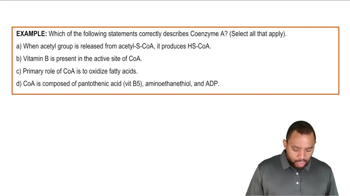Draw structures corresponding to the following names:
c. 3,3-Dimethyl-4-phenylpentanoic acid
 Verified step by step guidance
Verified step by step guidance Verified video answer for a similar problem:
Verified video answer for a similar problem:



 :55m
:55mMaster IUPAC Rules for Naming Carboxylic Acids Concept 1 with a bite sized video explanation from Jules
Start learning